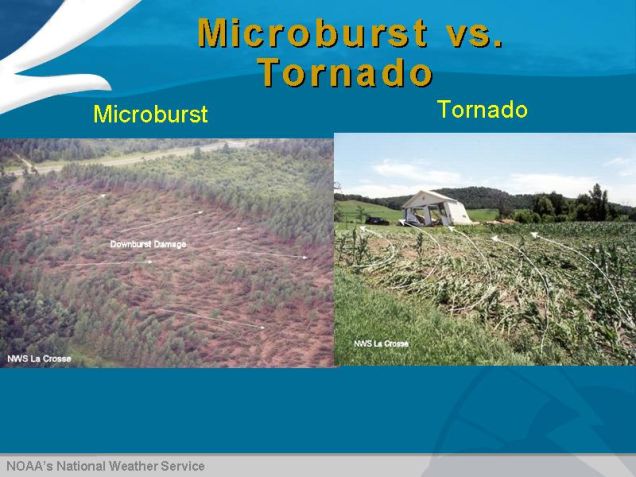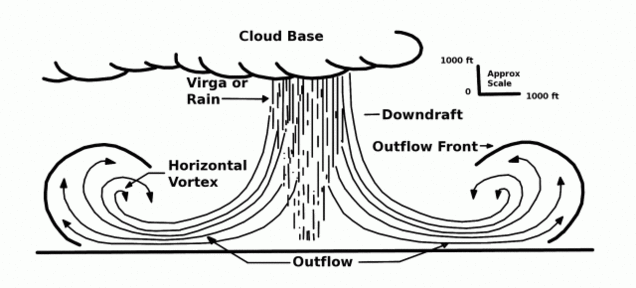This is just what it looks like when a microburst sweeps across.
This major wind event leveled thousands of trees in Easthampton, Massachusetts on October 8 2014. As seen in the video, they can create more damage than a weak tornado… Terrifying!
This strange but extreme weather event occurred at 4:40am on October 8, 2014 near Easthampton, MA. Many trees down and several homes have been damaged but no major injuries have been reported luckily.
What are microbursts?
Microbursts, or”downbursts,” are one of nature’s most dangerous wind storms. They are a sudden downward burst of wind from the base of a thunderstorm. The air can rush towards the ground at speeds of 60 MPH before impacting the surface and spreading out in all directions. Winds at the surface can exceed 100 MPH in the strongest microbursts, often causing extensive tree and building damage as seen in the video.

Microbursts only affect a small area, no larger than a few square miles in most cases. In contrast to a tornado (marked swirl), microbursts damage patterns are straight-line winds radiating away from the point of impact.
How Do Microbursts Form?
As described by IO9 microbursts:
“Occur through two processes: dry air entrainment and water loading. Dry air entrainment occurs when dry air mixes in with raindrops within a cloud. The dry air causes the drops to evaporate, lowering the air temperature through evaporative cooling. This area of cooler air begins to sink through the thunderstorm and gains speed as it falls. If there is a steep lapse rate (large and steady change in temperatures) beneath the storm, the cool bubble of air will sink faster because the air around it will grow warmer (and less dense) closer to the ground. This rapidly-descending column of air will eventually slam into the ground and spread out in all directions with winds of 60+ MPH, creating the microburst.

Another process that can help to create a microburst is called water loading, or the weight of the raindrops in the thunderstorm. It goes without saying that water is heavy; when combined with dry air entrainment, the incredible weight of millions and millions of gallons of water falling out of a thunderstorm can help drag the cooler air to the surface, creating a microburst.”
Stay safe!













[…] Sometimes microbursts are destructive! […]